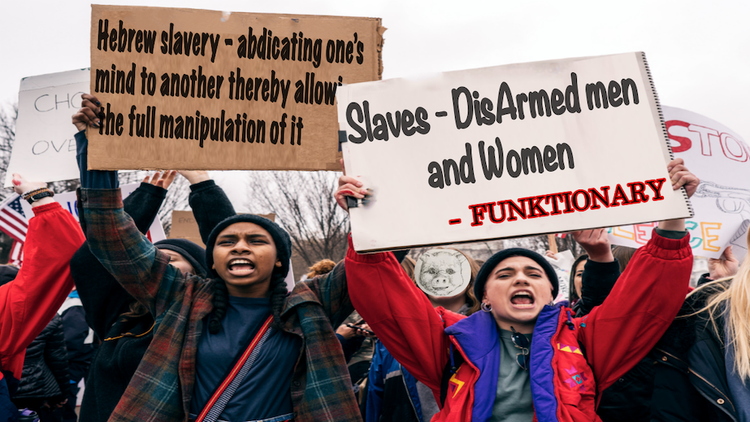The Right to Bear Arms is an Imaginary Right: 4th Circuit Ct Upholds Maryland's AR-15 Ban. Ignorantly Claims it is a Military Weapon; Yet No Army in the World Uses a Rifle that is Only Semiautomatic
/FUNKTIONARY EXPLAINS there are NO TYRANTS; only tyranny exists. How can one man or woman rule a multitude against their will except through mind control and word-conditioning control? “Find out the exact amount of injustice any people accept, and you will find out the exact amount of injustice they receive..
From [HERE] The Second Amendment Foundation (SAF) has announced they will seek Supreme Court review in Bianchi v. Wilkinson, SAF’s challenge to Maryland’s assault weapons ban, after the Fourth Circuit Court of Appeals upheld the law.
“Today’s decision from the 4th Circuit is unsurprising given their prior decision in Kolbe,” said SAF Executive Director Adam Kraut. “We believe, much like in Kolbe, the court’s analysis is flawed and that the challenged law is unconstitutional. We will be filing a petition for certiorari at the Supreme Court, as this case presents an excellent vehicle for the Court to settle this debate once and for all.”
In the 65-page opinion, judges for the majority wrote:
“The assault weapons [refering to the common AR15 rifle] at issue fall outside the ambit of protection offered by the Second Amendment because, in essence, they are military-style weapons designed for sustained combat operations that are ill-suited and disproportionate to the need for self-defense.” Chief Judge Diaz drafted a concurring opinion, with five other judges joining.
Judge Richardson drafted a dissenting opinion, with four other judges joining, stating:
“The Second Amendment is not a second-class right subject to the whimsical discretion of federal judges. Its mandate is absolute and, applied here, unequivocal…In holding otherwise, the majority grants states historically unprecedented leeway to trammel the constitutional liberties of their citizens.”
Joining SAF in the case are the Citizens Committee for the Right to Keep and Bear Arms, Field Traders, LLC., and three private citizens, David Snope, Micah Schaefer and Dominic Bianchi, for whom the case is named.
“The court relied heavily on the distinction between ‘military style’ arms and those appropriate for self-defense use,” said SAF founder and Executive Vice President Alan M. Gottlieb. “This distinction runs completely contrary to the mandates of Heller and Bruen, and now sets the stage for another petition for SCOTUS review of the case.”
In a brief dissent last month related to an Illinois ban on the “assault weapon,” Justice Clarence Thomas said that the overwhelming popularity of the firearm (AR-15), coupled with its non-military operation, makes it a clear fit under the Second Amendment. [MORE] Thomas wrote:
The Seventh Circuit’s decision illustrates why this Court must provide more guidance on which weapons the Second Amendment covers. By contorting what little guidance our precedents provide, the Seventh Circuit concluded that the Second Amendment does not protect “militaristic” weapons. See 85 F. 4th, at 1199. It then tautologically defined “mili- taristic” weapons as those “that may be reserved for mili- tary use.” Id., at 1194. The Seventh Circuit’s contrived “non-militaristic” limitation on the Arms protected by the Second Amendment seems unmoored from both text and history. See Friedman v. Highland Park, 577 U. S. 1039, 1041 (2015) (THOMAS, J., dissenting from denial of certio- rari). And, even on its own terms, the Seventh Circuit’s ap- plication of its definition is nonsensical. See 85 F. 4th, at 1222 (Brennan, J., dissenting) (“The AR–15 is a civilian, not military, weapon. No army in the world uses a service rifle that is only semiautomatic”). In my view, Illinois’ ban is “highly suspect because it broadly prohibits common semi-automatic firearms used for lawful purposes.” Friedman, 577 U. S., at 1042 (opinion of THOMAS, J.). It is difficult to see how the Seventh Circuit could have concluded that the most widely owned semiautomatic rifles are not “Arms” protected by the Second Amendment. [MORE]







































































































































































































































































